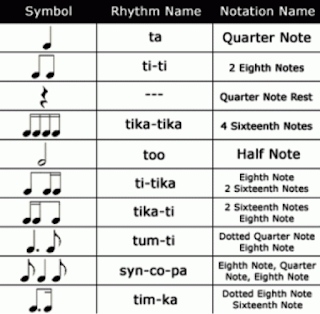Learning About Vocal Registers Versus Vocal Ranges
I want to talk to you about the
different Vocal Registers. This
is NOT about your vocal RANGE. A Vocal
Register is a particular range of tones in the voice that is produced by a
specific vibratory pattern of the Vocal Folds.
Vocal RANGE is the length and breadth of all the notes a person can
produce, from the lowest to the highest note.
I will explain below which registers utilize which muscles in the vocal
mechanism. The types of Vocal Registers
are: Vocal Fry or Pulse, Modal or Chest Voice,
Falsetto or Head Voice, and the Whistle Register. The human vocal mechanism is capable of
creating vibratory patterns to produce only these four registers, though not
everyone has the possibility of this much range. Each voice is unique but if you don’t have the
physiology, it’s difficult to “create” it.
Professional voice lessons can help you access all the areas of your
voice, and practice coupled with your lessons, yields increased range, control,
and consistency. Many people have
“pieces” of registers but lack the ability to connect those pieces into one
whole, continuous voice. This will
hopefully help you understand what is going on with your voice, and how you can
alleviate problems or challenges, and move toward building one healthy,
consistent, unchanging sound. Every
vocal sound is created by the passage of air through vibrating vocal folds but
the muscles of the vocal mechanism affect different registers, different areas
within a vocal range. The muscles that
affect vocal production in the Vocal Mechanism are primarily the Thyroarytenoid
and the Cricothyroid.
The Vocal Folds are composed of FIVE
layers of tissue: 1 - Squamous
epithelium - This is just the outermost covering for the Folds. It helps maintain the shape of the vocal
folds, provides protection for the remaining Fold tissue, and aids Vocal Fold
hydration; 2 - (SLP) Superficial Lamina Propria or “Reinke’s Space” - this is
mostly loose, fibrous, and elastic, and it forms a kind of cushion to the area;
3 - Intermediate Lamina Propria (ILP) - elastic fibers; 4 - Deep Lamina Propria
(DLP) - this layer has the look of a “bunch of cotton thread” and mainly
contains collagenous fibers, which add to the durability of this layer; 5 -
Vocalis Muscle - this is the muscle that acts as a sphincter muscle for the top
of the body. It seals air into the lungs
and food into the stomach; these are its active mechanical actions. In its passive state, it has the appearance
and consistency of stiff rubber bands.
Overall, the Vocalis Muscle helps control stiffness in the Vocal Folds.
To
understand your own voice, the best way to comprehend where your limitations
and strengths are is to refine your knowledge of the mechanism itself. You need to work with your voice teacher to
strengthen the muscles you need for production.
For the lowest Vocal Fry or Pulse Register, you need only work on the
Thyroaryteniod Muscle and make use of all the layers of your Vocal Folds. For the Modal or Chest Register, sound is
MOSTLY produced using the Thyroarytenoid but also with some access to the
Cricothyroid, and again, most of the layers of the Vocal Folds. To work in the Head or Falsetto Register,
primary muscle responsibility is with the Cricothyroid muscle but with
additional help from the Thyroarytenoid, and only the cover of the Vocal
Folds. Lastly, to sing in the Whistle
Register, the Thyroarytenoid must be completely relaxed. Only the Cricothyroid muscle is engaged for
sound production, and the Vocal Folds are not affected significantly, as only
the outer cover layers are employed.
I recognize that these are all
highly technical and probably bothersomely scholarly terms but the more
accomplished you can be in your KNOWLEDGE of the Vocal Mechanism, the more
tools you have for perfecting your own voice.
Singers seem obsessed with their vocal RANGE. What is not often understood is that many
times range limitations are due to a need to develop and connect the various
Vocal Registers. Learning to adjust
breath, vowel shape, and some Laryngeal alterations make the transition between
registers much easier to negotiate.
Check out the following Blog Posts
on the specifics of the Fry or Pulse Register, the Modal or Chest Register, the
Head Voice or Falsetto Register, the Whistle Register, and finally, a post on
“breaks”, the Mix, and those marvelous Transition areas. This is all good stuff, and adds more and
more “tools” for your performing toll kit.
Send me any questions you have.
If you have questions about my lessons or me, check out my website at
www. SingitForward.net. Otherwise, I’d love to hear from you here
with questions, comments, and/or ideas for future blog post topics. Thanks for reading! Sing it Forward!


Comments
Post a Comment